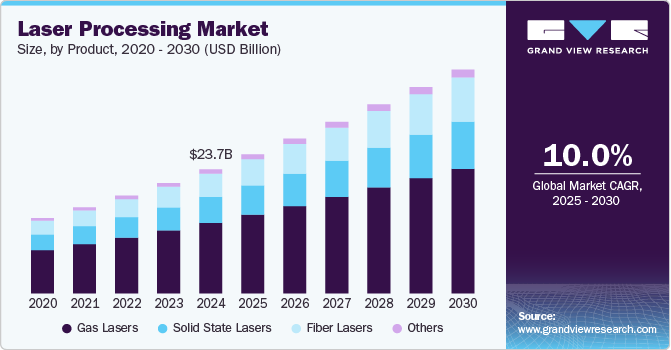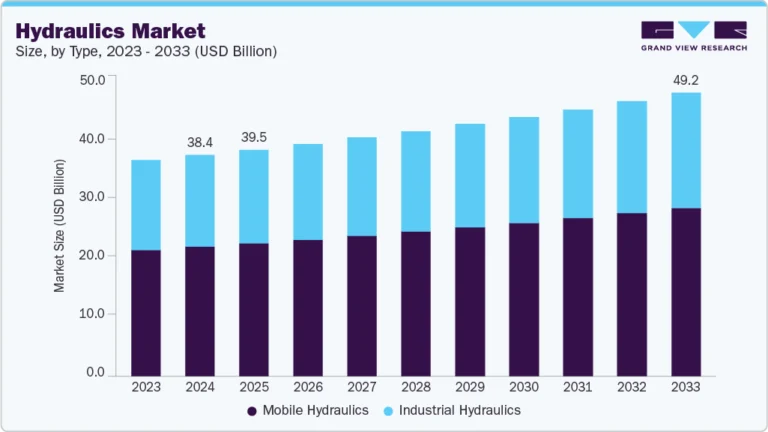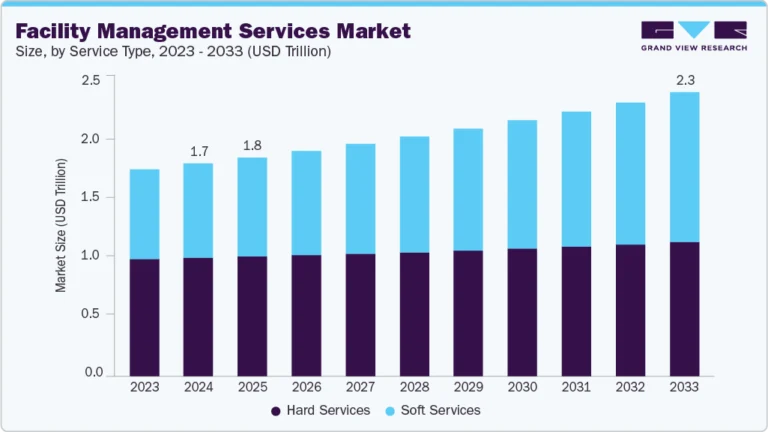Linear Motion Bearing Market Size, Share & Trends Analysis growing at a CAGR of 5.7% from 2024 to 2030

The global linear motion bearing market size was estimated at USD 9.13 billion in 2023 and is expected to grow at a CAGR of 5.7% from 2024 to 2030. The surge in industrial automation and the integration of robotics in manufacturing and other sectors have significantly propelled the demand for linear-motion bearings. As industries increasingly automate processes to enhance efficiency, precision, and productivity, the need for components that ensure smooth and accurate motion has grown. Linear-motion bearings are crucial for various automated systems, including robotic arms, CNC machines, and conveyor systems, where they facilitate precise linear movement, reduce friction, and extend the lifespan of machinery. This trend toward automation and robotics will continue driving the market as businesses seek to optimize their operations.
Request a free sample copy or view report summary: https://www.grandviewresearch.com/industry-analysis/linear-motion-bearing-market-report/request/rs1
In addition, the electronics and semiconductor industry is another significant market driver. This sector relies heavily on these bearings to produce electronic devices and components requiring precise and reliable motion control. The growing demand for consumer electronics, including smartphones, tablets, and wearable devices, has increased the need for linear-motion bearings in manufacturing processes. Moreover, advancements in semiconductor fabrication and the miniaturization of electronic components have further amplified the demand for these bearings, as they play a critical role in the delicate and precise operations required in this industry.
The market has seen significant advancements in the materials and coatings used in manufacturing bearings. Newer materials, such as ceramics and advanced polymers, are being used to enhance performance characteristics. These materials offer superior properties like reduced friction, increased wear resistance, and higher durability than traditional steel bearings. In addition, innovative coatings, such as diamond-like carbon (DLC) and ceramic coatings, are being applied to bearings to reduce friction further and enhance their operational lifespan, making them suitable for high-speed and high-load applications.
Furthermore, integrating the Internet of Things (IoT) and smart technologies into linear-motion bearings is a notable trend. Smart bearings equipped with sensors can monitor real-time data on various parameters such as temperature, vibration, and load. This data can be analyzed to predict maintenance needs, prevent failures, and optimize performance. IoT-enabled bearings facilitate predictive maintenance, reducing downtime and operational costs. This trend aligns with the broader move towards Industry 4.0, where connectivity and data-driven decision-making are paramount.
However, the high initial costs associated with advanced linear-motion bearing systems are a significant restraint. Cutting-edge technologies, materials, and manufacturing processes contribute to the high cost of these bearings. For many small and medium-sized enterprises (SMEs), the substantial upfront investment required can be a deterrent, limiting the adoption of these advanced systems. This is particularly challenging in price-sensitive markets where cost considerations heavily influence purchasing decisions. In addition, the complexity involved in installing and maintaining linear-motion bearing systems can act as a barrier to market growth. These systems often require specialized knowledge and skills for proper installation, alignment, and maintenance. The lack of trained personnel and the need for specialized equipment can increase operational costs and downtime, discouraging potential users from adopting these advanced systems.
Type Insights
Based on the type, the market is segmented into single-axis LMS and multi-axis LMS. The single-axis linear motion system segment held the largest market share of 57.82% in 2023. Single-axis linear motion systems are relatively simpler in design and operation compared to multi-axis systems. Their straightforward construction makes them more cost-effective, both in terms of initial investment and maintenance. For many applications, especially those in industries where budget constraints are significant, the affordability of single-axis systems is a key advantage. They provide the necessary functionality without the complexity and expense associated with more advanced multi-axis systems.
The multi-axis linear motion segment registered the highest CAGR of 6.6% over the forecast period. The growing complexity and versatility of modern industrial applications have driven the demand for multi-axis linear motion systems. These systems offer enhanced capabilities for handling more sophisticated tasks that require coordinated movements across multiple axes. Industries such as robotics, aerospace, and manufacturing increasingly rely on multi-axis systems for precise and complex operations, contributing to the segment’s rapid growth. Moreover, manufacturing processes across various industries, including electronics, automotive, and semiconductors, require high precision and efficiency. Multi-axis linear motion systems provide the necessary precision for intricate manufacturing tasks, such as assembling electronic components or machining complex parts.






